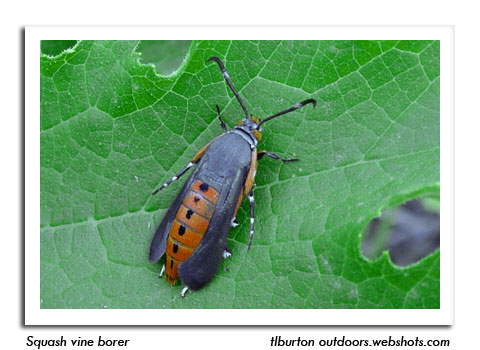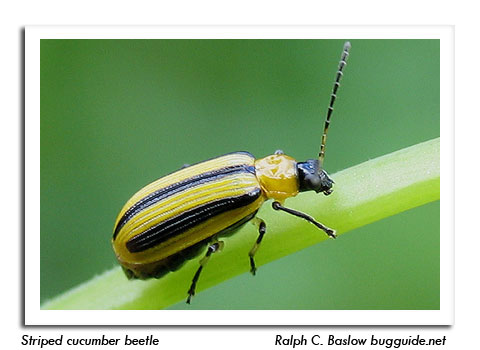
 |
|
|
Vegetables
Volume 57 Number 11 Date 06/21/2012 SQUASH VINE BORER - The early-stage larvae of this insect are excavating the stems and runner vines, causing squash plants to wilt. Closer examination of the vines should reveal entrance holes from which their sawdust-like frass is expelled. Varieties most susceptible to squash vine borer damage are 'Blue Hubbard', 'Boston Marrow' and 'Golden Delicious', while 'Butternut', 'Dickenson Pumpkin' and 'Green Striped Cushaw' have shown some resistance. STRIPED CUCUMBER BEETLE - Adults have been very active over the southern half of the state in the last two weeks. Growers of cucurbits should continue to monitor plants for these yellow and black striped beetles that transmit bacterial wilt of cucurbits, infecting cucumbers, melons and squash through feces or contaminated mouthparts. Control is warranted for populations of 4-5 beetles per 50 plants. ONION MAGGOT - Second generation flies are emerging near Madison, La Crosse, Sullivan and other locations where 1,950 GDD (base 40°F) have been surpassed. Emergence is anticipated near Eau Claire, Hancock and Waukesha in the week ahead. Management of the summer generation is less critical than spring and fall populations since egg desiccation and mortality rates are higher at warmer temperatures, but season-long sanitation is still critical for preventing future problems. Second brood eggs are deposited near previously damaged onions. TOMATO HORNWORM - Moths are active and laying eggs on the undersides of tomato leaves. Tomato growers who have experienced past problems with this pest should inspect the undersides of leaves for individually laid eggs that are smooth, spherical and pale green in color. Once the eggs hatch, the larvae grow very rapidly and quickly defoliate plants. Spot treatment may be justified for infestations of one or more larva per plant on a minimum of 10 plants. Prompt removal of the larvae is the best control measure. FLEA BEETLES - Reports indicate that flea beetles have been a persistent problem for home gardeners this season. In many instances their damage is aesthetic, but control may be considered for young plants if beetles are present on all plants and defoliation exceeds 30%. --Clarissa Hammond, DATCP Pest Survey 




|
|
|